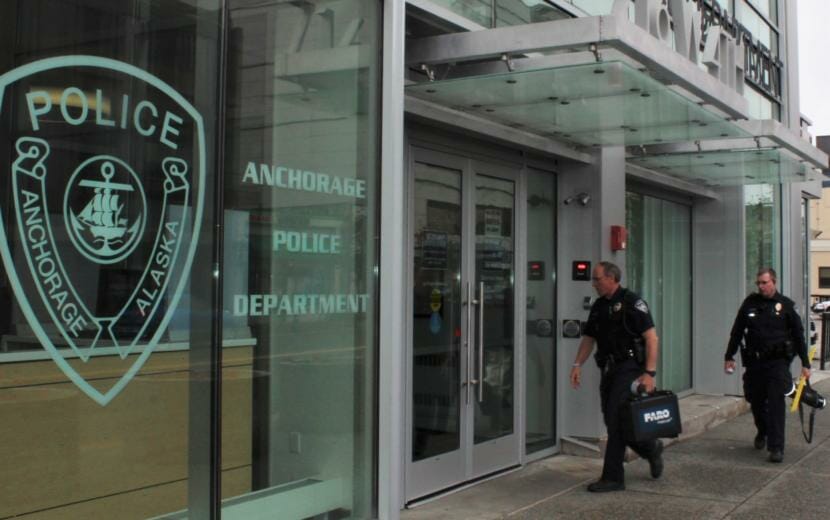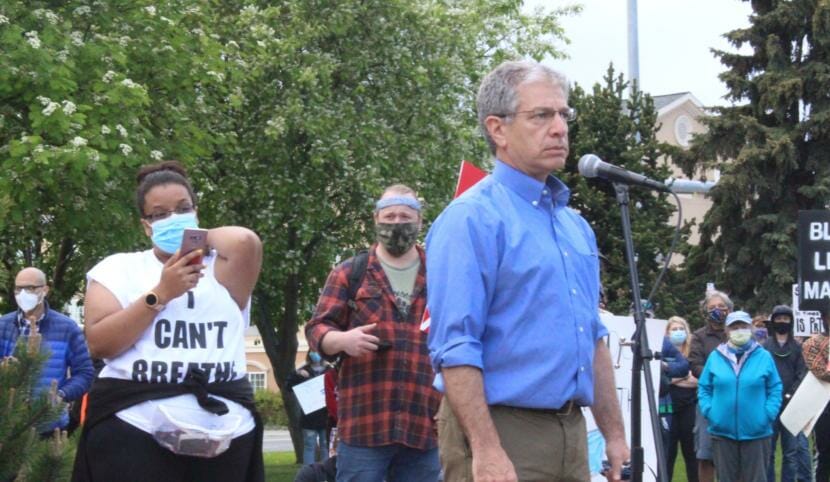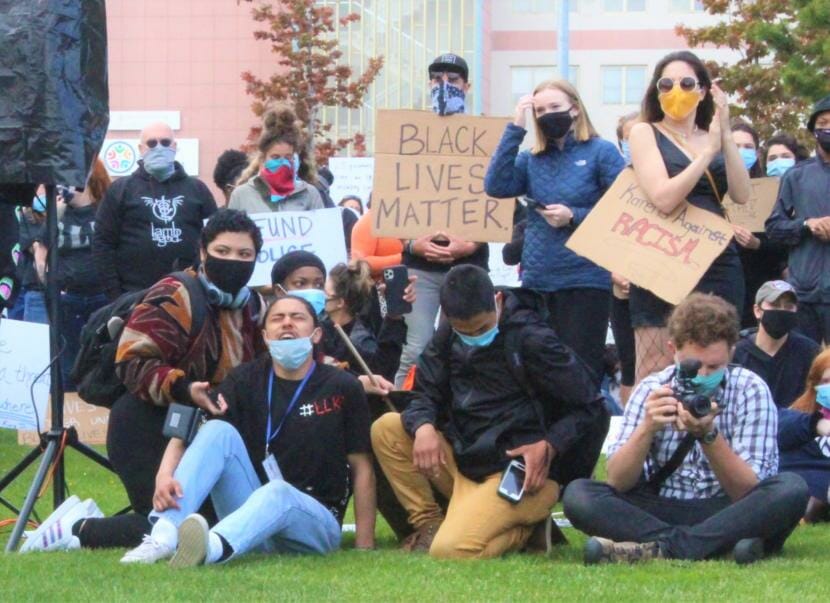
Following a weekend of large demonstrations, the Anchorage Police Department said it had a “progressive mindset” on use-of-force policies and racial bias training, but acknowledged it could improve.
At a press conference on Tuesday, Anchorage Police Chief Justin Doll said that the city’s police department had robust training in recognizing implicit biases and conflict de-escalation.
“It’s something that they are exposed to at the beginning of the police academy and then that concept is woven into every training class that they get that involves interacting with the public and use of force for the rest of the six months that they’re at the police academy,” he said.
But he said the department needs to do better in documenting the race of victims of police violence. According to data on police shootings compiled by The Washington Post, Anchorage police have killed 11 people since 2015. Of those victims, five were listed as white by the Post, two were Alaska Native, one was black, one was Asian and two were unknown.
Doll said that the department’s policies banned shooting at moving vehicles except in “extraordinary circumstances” and required reporting any use of force by an officer. He said the Alaska Police Standards Council, an advisory council made up of citizens and law enforcement appointed by the governor, “can and will” remove an officer for various forms of misconduct, and that the Department of Law’s Office of Special Prosecutions reviews all officer-involved uses of deadly force and makes conclusions about police conduct.
Doll said he didn’t have data on the demographic composition of the police department, but he said the city needed to do work to hire more minority officers.
“I think that the department should reflect the community, so to the extent that we can attract qualified applicants from all the various groups that are represented in our community, we would love to do that,” he said.
Doll said that the department is getting ready to submit a proposal to the Anchorage Assembly to get officers to start using body cameras. He said the department is in “full support” of requiring body cameras to be worn, but said that they are expensive to implement.
According to the Bureau of Justice Statistics, about 50% of police departments around the country had acquired body cameras as of 2016, though many hadn’t fully implemented their use.
Mayor Ethan Berkowitz said that there were also ways that Anchorage can invest in alternatives to policing, most notably into mental health treatment. He said that the police department is not designed to deal with mental health issues, though officers routinely do.

“We are looking at bolstering the Anchorage Health Department because the health department is a critical piece of public safety so we can have more mobile social workers, we can have the kind of non-police intervention that makes a difference,” he said.
The city budgeted about $13 million to the Anchorage Health Department for 2020, and about $122 million for the police department.
Berkowitz also said that he had been reminded he needs to listen to the community’s concerns more. At a recent rally to remember George Floyd, Berkowitz was heckled by some protesters after saying that the Anchorage Police Department doesn’t have the same problems as other cities.
“There were a lot of reminders that I need to listen more with my heart than perhaps I did initially. This is not simply a problem that we can solve by applying some policy answer we need to hear what each other are saying and all of us come to this place from different places and have taken different paths and wear different burdens of history,” he said.

Berkowitz said that Tuesday’s conference was the beginning of a conversation that will continue between the public and the city’s police department.